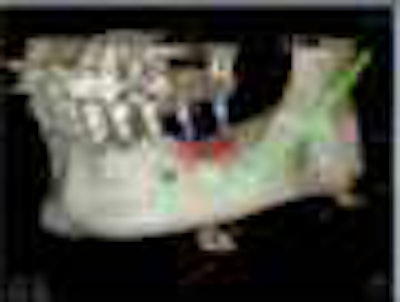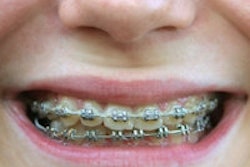
When it comes to dentistry, the adoption of cone-beam CT (CBCT) has so far been strongest in orthodontics. But a new literature review in the Journal of the American Dental Association calls into question whether CBCT should be as widely used as it is in orthodontics today (March 2012, Vol. 143:3, pp. 241-252).
"The use of CBCT is increasing, but clinical guidelines based on a solid scientific foundation are lacking," wrote the study authors from Radboud University Nijmegen Medical Centre. "We conducted this systematic review to investigate the use of CBCT in orthodontics, as well as to evaluate the level of available evidence so we could provide a basis for when to use CBCT for orthodontic purposes."
“This study reaffirms concerns that many have had regarding the use of CBCT for some time.”
— William C. Scarfe, DDS, University of
Louisville School of Dentistry
For the lit review, the authors searched the Cochrane Library, PubMed, MEDLINE, Embase, Scopus, and the Cumulative Index to Nursing and Allied Health Literature databases. Inclusion criteria were CBCT use in orthodontics and that the participants were human.
They identified 550 articles, with 50 meeting the inclusion criteria. Study topics included temporary anchorage devices, cephalometry, combined orthodontic and surgical treatment, airway measurements, root resorption and tooth impactions, and cleft lip and palate.
"As we were searching and selecting articles for this review, it often was unclear from the articles' abstracts whether multislice CT or CBCT was used," the study authors wrote. "We expected this lack of clarity with older articles, as CBCT did not exist before the late 1990s. However, even in more recent articles, this distinction often was not clear in the abstract. This underlines the importance of providing well-written, structured abstracts for scientific publications."
Limited evidence
Using the scoring system for methodological quality developed by Manuel Lagravere, DDS, and colleagues, the researchers found no high-quality evidence regarding the benefits of CBCT use in orthodontics.
"Investigators often discussed the advantages of and potential for CBCT in these articles, but little attention was given to the actual benefit of using CBCT for either the clinician or the patient when compared with the use of conventional 2D imaging," they wrote.
Limited evidence showed that CBCT offers better diagnostic potential, leads to better treatment planning, or results in better treatment outcome than do conventional imaging modalities, the study authors noted.
"The application of CBCT in orthodontics can be justified in some cases, but it is not always the answer to all clinical problems," they wrote.
For example, in orthodontics the use of CBCT is promoted by its manufacturers in the area of tooth impaction. However, only two of the 50 articles in the review concerned tooth impaction, and they had average methodological quality, according to the study authors. Only the results of the studies regarding airway measurement provided enough scientific data to suggest that CBCT may provide added diagnostic value, they noted.
"The additional radiation exposure associated with a CBCT scan compared with that associated with a conventional 2D radiograph should be weighed in each case against the possible benefits, which have not been supported in the literature," they wrote. "Research is needed to elucidate the efficacy, efficiency, and cost effectiveness of CBCT use in orthodontic diagnosis and treatment planning. This requires quantification of the effects of CBCT on treatment procedures, progression, and outcome."
Guidelines in the works
This article is extremely timely with regard to the American Academy of Orthodontics/American Academy of Oral and Maxillofacial Radiologists (AAO/AAOMR) Task Force committee's efforts to develop selection criteria for CBCT, according to William C. Scarfe, DDS, professor of radiology and imaging science at the University of Louisville School of Dentistry.
"The joint AAO/AAOMR task force committee on selection criteria for CBCT has been involved over the last two years in developing a document that is now close to submission to both organizations," Dr. Scarfe wrote in an email to DrBicuspid.com. "This study reaffirms concerns that many have had regarding the use of CBCT for some time."
While there are currently few well-designed studies on the clinical efficacy of the use of CBCT in orthodontics, "there is now opportunity for the profession to focus on those conditions where CBCT is potentially important to patient management and affects treatment outcome," he added.



















